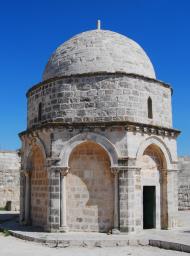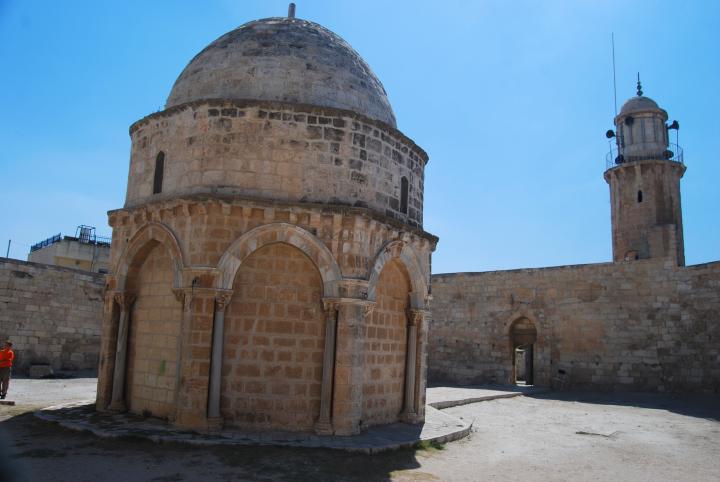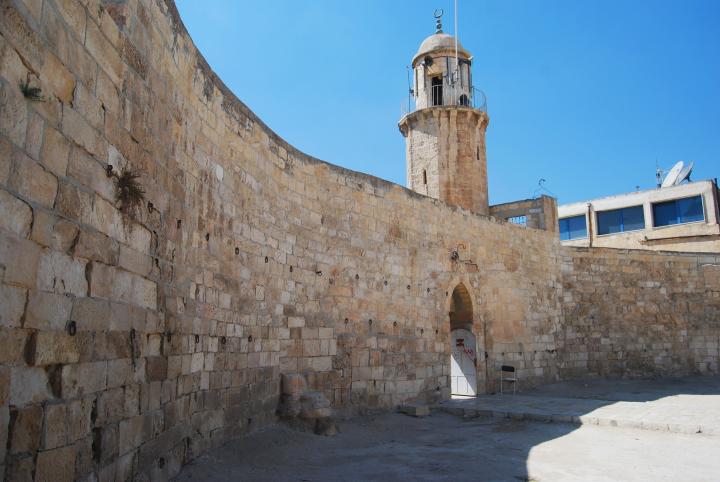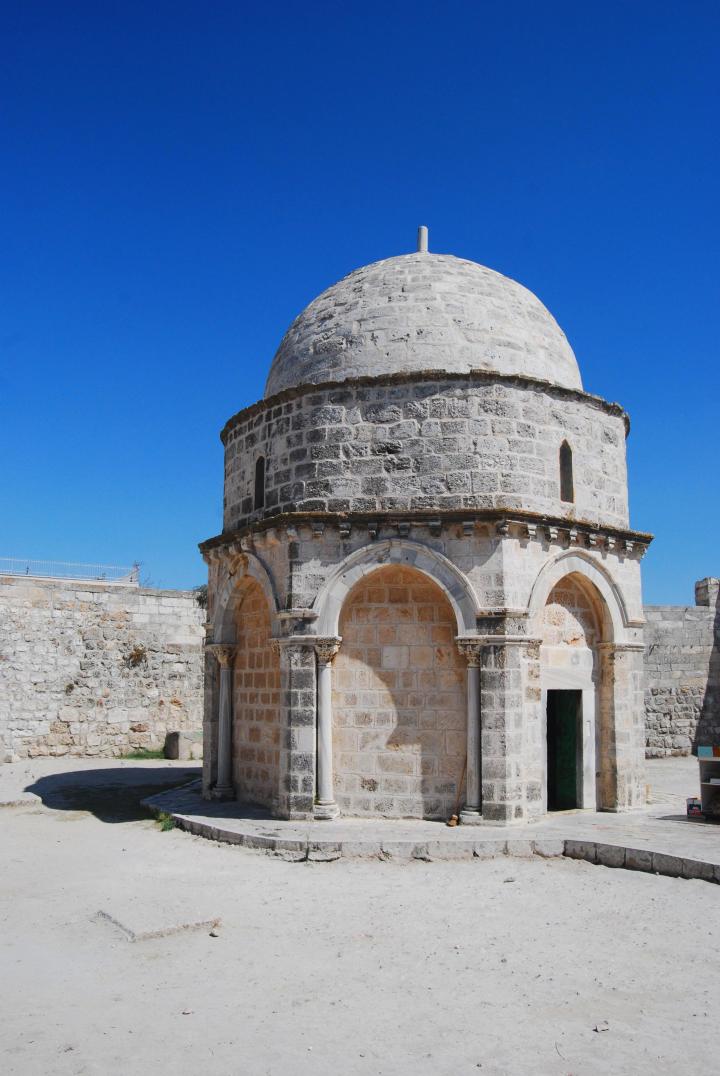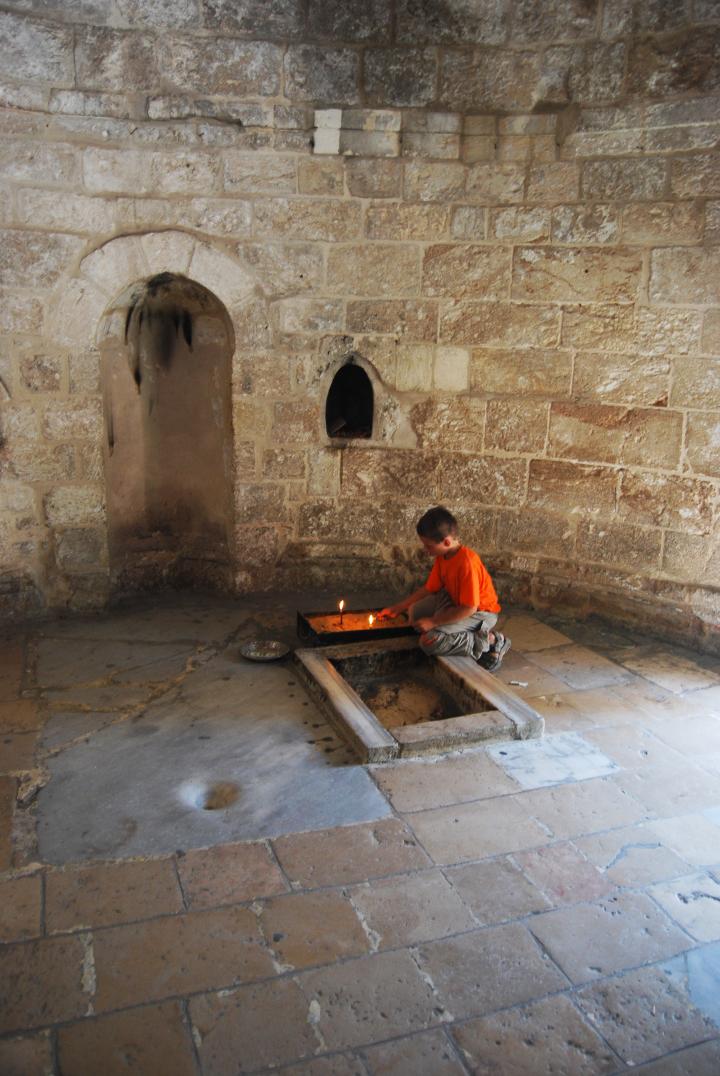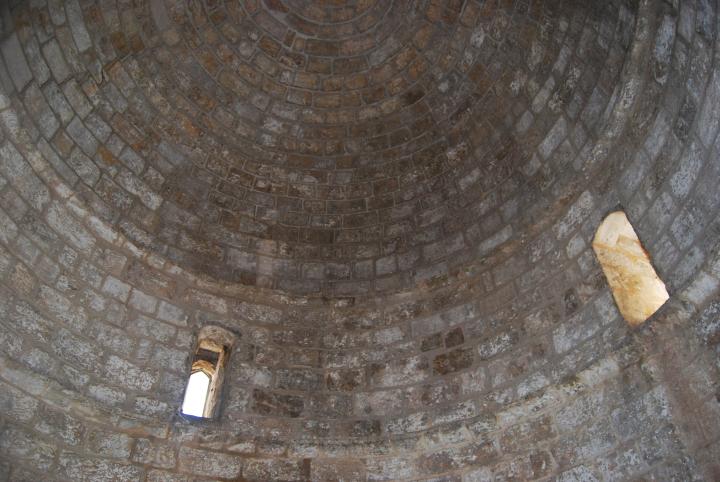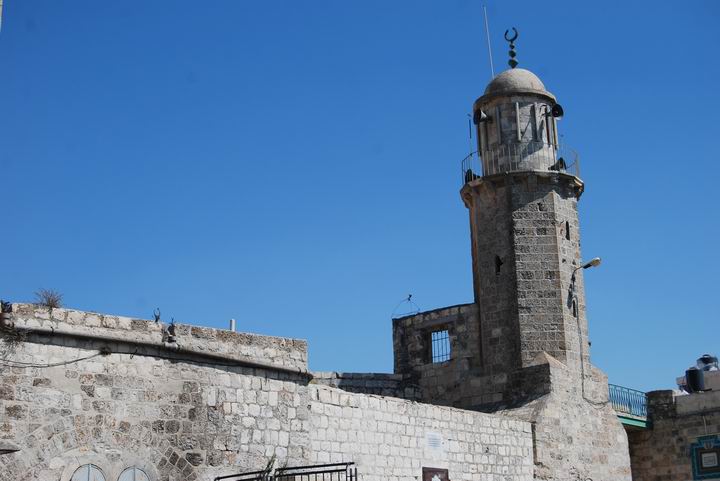An octagon chapel on Mt Olives, built over ancient structures. According to tradition, this sacred site is where Jesus ascended to heaven 40 days after resurrection. Luke 24 51: “And it came to pass, while he blessed them, he was parted from them, and carried up into heaven”.
Home > Sites > Jerusalem > Mt. Olives > Chapel of Ascension
Contents:
Overview
Location
History
Photos
* Court Yard
* Entrance
* Interior
* Mosque
Biblical
Etymology
Links
Overview:
The Chapel of the Ascension is a Christian and Muslim holy site located on the Mount of Olives in Jerusalem. According to tradition, it is the site where Jesus Christ ascended into heaven forty days after his resurrection.
The original chapel was built by the Roman emperor Constantine in the 4th century AD, but it was destroyed by the Persians in 614 AD. The current structure was built by Crusaders in the 12th century and was later renovated by the Ottomans in the 19th century.
The chapel is a small octagonal building that contains a stone slab that is said to bear the imprint of Jesus’ feet. The stone is located in a small room above the chapel’s entrance, which can be reached by a set of stairs. The chapel’s interior is adorned with beautiful frescoes and other artwork, including an image of Jesus’ ascension.
The chapel is considered a holy site by both Christians and Muslims. It is currently owned by the Islamic Waqf, but is open to visitors of all faiths.
Location:
The ruins of the chapel is located in the suburb of A-Tur, on the east side of the main road of the top of Mount of Olives, at 830M above sea level. It is easily accessible, and you can park close to its entrance.
Near the Ascension chapel is the Russian Orthodox Church of the Ascension, which is another traditional site of the ascension. It is located near a tall tower inside the village of A-Tur.
An aerial view is seen below showing the location of the church (in the center) and other points of interest.
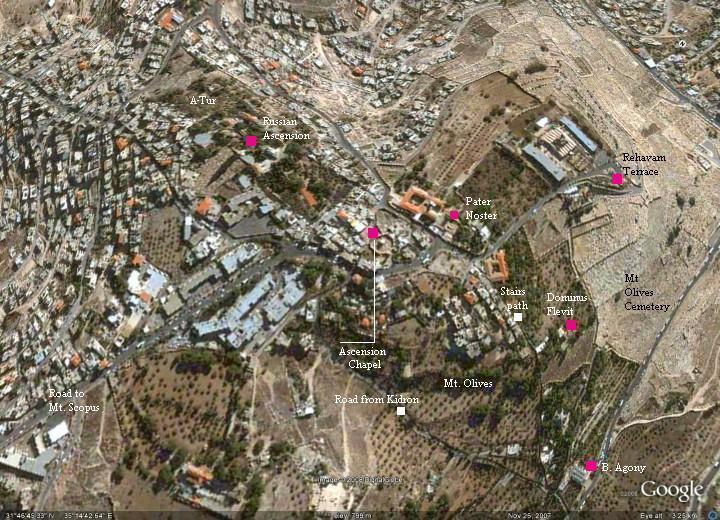
History of the place:
-
New Testament
According to tradition, this is the site where Jesus ascended to heaven 40 days after resurrection (Luke 24 51: “And it came to pass, while he blessed them, he was parted from them, and carried up into heaven”).
-
Byzantine period
The church was built here at the end of the 4th century as a memorial chapel, marked by Constantine’s mother, Helena. The Byzantine design was round (12M in perimeter – see diagram below). Inside the structure was a a double row of columns with an open roof, laid out in two concentric circles (6M and 2M in perimeter). It existed until the 7th century, and was destroyed by the Persians. It then was rebuilt, and existed until the 10th century, but destroyed again during the Arab conquest.
-
Crusaders period
The site was rebuilt by the Crusaders in the 12th century based on the original Byzantine design.
The church was built from two concentric octagon-shaped structures – an external 12M x 12M structure, and a central 2x2M temple. It was built over the round Byzantine bases. The inner chapel was surrounded by columns and arches, which supported an open cape.
The compound had a secondary military function – one of the fortresses along the road to Jericho that protected the pilgrims.
-
Mamlukes and Ottoman period
In 1187 Saladin captures the city and converts it to a mosque.
Since the chapel was mainly used by Christians, a second structure was built during the Ottoman period on the south side of the compound and the mosque was relocated to it.
In 1835 the Crusader structure was converted to an enclosed room, by covering the cape and adding walls between the columns. The reconstruction was conducted by the Armenian Christians, who hold celebrations in this site on the eve of the feast of ascension, 40 days after Easter.
-
Modern times
A Russian Orthodox church was built nearby in 1870, marking another site of the ascension.
Archaeological excavations were conducted here by the Franciscans during 1959-1964. The present structure is based on the Crusader design, with small changes conducted after the retreat of the Crusaders at the end of the 13th century.
Photos:
(a) Court Yard:
A small court yard (12M by 12m) surrounds the chapel. The walls around the compound are based on the Byzantine and Crusader structures, and some of its bases can be seen along the walls.
Click on the photos to view in higher resolution…
The entrance to the chapel is seen in the photo below. To the right of the entrance is the tower of the adjacent mosque. To the left of the gate are remains of the Crusader church – a base and several layers of the wall.
On the walls are a set of hooks that were used by the pilgrims to cover the yard with tents during the ascension celebrations.
(b) Entrance to the chapel:
The chapel stands in the center of the walled yard. The entrance to the chapel is located on the western side of the structure. The original structure is Crusader, built over ruins of a Byzantine memorial chapel. The walls between the columns and the covered cape were added in a later period.
Behind the chapel, along the walls, are several altars used by different Christian sects. The one in the photo below is used by the Jacobite Syrian Christians.
(c) Interior:
In the center of the floor, inside the dome, is a stone with a cavity. According to tradition, it is an imprint of the foot of Jesus when he made the ascent to heaven. Visitors come here to cherish the last spot of Jesus on earth, read passages from texts and sermons, chant and light up candles.
A view of the ceiling is seen below. The original Crusader cape was open, and the cover was added in a later period.
(d) Mosque:
During the Ottoman period, a mosque was built on the south side of the Crusader structure, and its tower – seen below – was built on the north side of the entrance to the chapel.
Biblical:
(a) Luke 24, 50-51
According to Luke, Jesus ascended to heaven near Bethany, which is identified as a village on Mount of Olives.
“And he led them out as far as to Bethany, and he lifted up his hands, and blessed them. And it came to pass, while he blessed them, he was parted from them, and carried up into heaven”.
(b) Acts 1, 9-12
This passage identifies the Mt of Olives as the site of ascension:
“And when he had spoken these things, while they beheld, he was taken up; and a cloud received him out of their sight. And while they looked stedfastly toward heaven as he went up, behold, two men stood by them in white apparel; Which also said, Ye men of Galilee, why stand ye gazing up into heaven? this same Jesus, which is taken up from you into heaven, shall so come in like manner as ye have seen him go into heaven. Then returned they unto Jerusalem from the mount called Olivet, which is from Jerusalem a sabbath day’s journey”.
Etymology (behind the name):
A-Tur – Arabic: “The Mount” (of Olives) – an Arab neighborhood on top of Mt of Olives where the Ascension church is located
Links:
The Ascension: points of interest on Mount Olives:
- Russian Convent – Mount of Olives Convent of the Ascension
- Augusta Victoria – “Evangelical Lutheran Church of the Ascension”
- Chapel of Ascension – this site
BibleWalks.com – making the Bible
Dominus Flevit<—previous Jerusalem site–<<< All Sites >>>—next Jerusalem site–> Russian Ascension
This page was last updated on Mar 19, 2023 (new overview)
Sponsored links:
